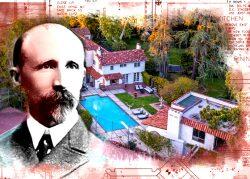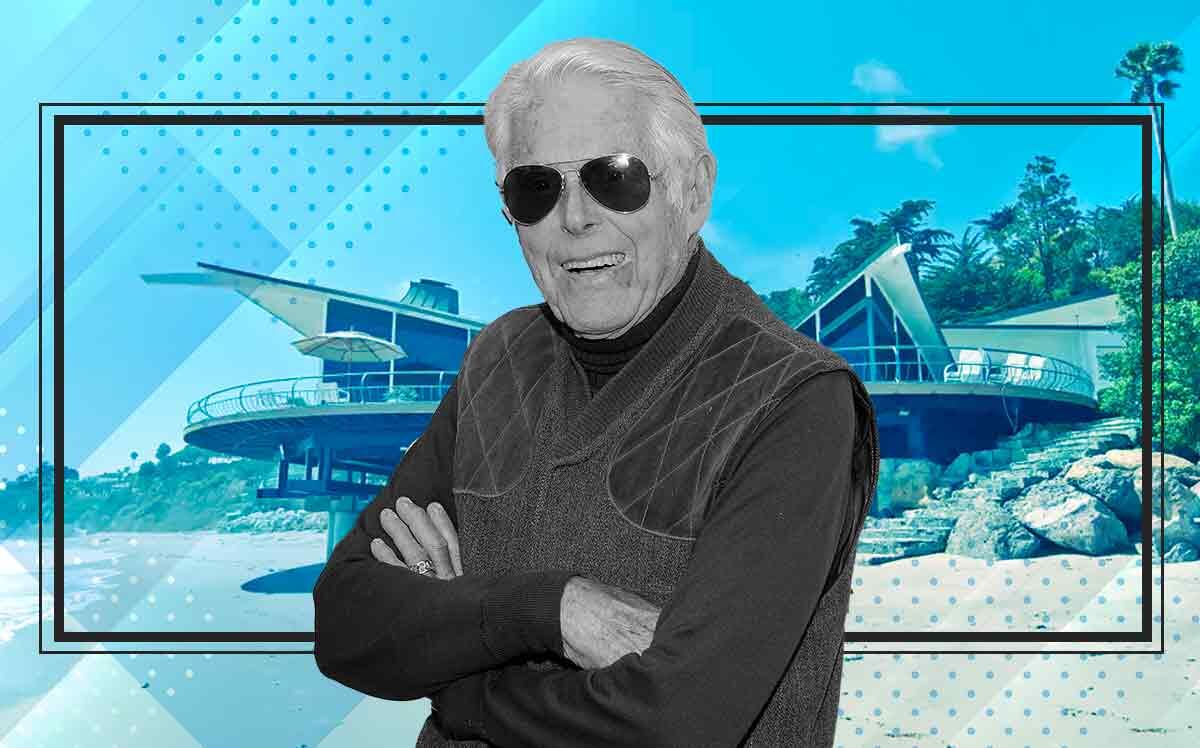Los Angeles surfer-architect Harry Gesner, a pioneer of sustainable design whose Malibu Wave House created a worldwide splash, has died. He was 97.
The designer whose houses straddled California canyons, perched over beaches and jutted from cliffs, died June 10 at his Sandcastle home in Malibu, the New York Times reported. The cause was complications of cancer, said his stepson, Casey Dolan.
As an architect he was largely self-taught, though Frank Lloyd Wright once beckoned him to study at his Taliesin West studio in Scottsdale, Ariz.
His shiplike houses, often built by Norwegian shipbuilders, defined the Southern California landscape and its freewheeling style with walls of glass and round, sunken living rooms, fire pits and peaked A-frame roofs.
Gesner sketched his most famous house from a long board while surfing in front of a secluded cove in Malibu, where it was built.
The Wave House, built in 1957 for his friend and fellow surfer Gerry Cooper, looks like a cresting wave. The hand-cut copper shingles on its vaulted roof resemble the scales of a fish.
To this day, many insist it inspired the Sydney Opera House, built that year by Danish architect Jorn Utzon, who called him to compliment him on his design.
Harry Harmer Gesner was born on April 28, 1925, in Oxnard, and raised in Santa Monica. He skied and surfed, and flew his first plane at 14. The actress June Lockhart was his first love, but their romance was cut short by World War II.
He was 19 when he waded onto the beach at Normandy. Years later, he said he “rudely changed from a boy to a man after about a minute with the wounded, dying and about to be dead members of my squad.”
He survived D-Day but nearly lost his legs to frostbite in the Battle of the Bulge. He sketched as he marched: capturing the aqueducts, churches and castles of Europe, noting Gothic details.
After his discharge, he spent six months at Yale auditing an architecture class taught by Wright. He later worked for an uncle, an architect. He apprenticed to builders, then began designing.
For his parents and an aunt, Gesner designed houses made from adobe bricks laid at an angle. For a developer, he built a glassy rhomboid on a ridge over the Malibu coast. For a family with a small site in a canyon, he built a house like a bridge — or an aqueduct — that spans two slopes.
For Fred Cole, the swimwear magnate, he designed a double A-frame bachelor pad with Tahitian touches. For its walls of glass, he fashioned “curtains” made from bamboo and glass beads. He then perched it on a skinny site overlooking Sunset Boulevard some said was impossible to build on.
For actor Marlon Brando, Gesner designed a compound for the French Polynesian atoll he bought after filming “Mutiny on the Bounty.” The proposed estate – to be powered by windmills and solar panels and cooled by a giant aquarium that Brando wanted filled with sharks and moray eels – never broke ground.
“He was very bedroom-oriented, and everything evolved from there,” Gesner once recalled. “Suddenly in the middle of a discussion, a beautiful Asian model would walk in and Marlon would disappear for half an hour. I would just sit there and read a book.”
Gesner used sustainable materials long before they were fashionable.
He built his Sandcastle for himself and his fourth wife, the actress Nan Martin, next to the Wave House. It was made of lumber salvaged from a high school that had burned down, marble from public baths that were about to be demolished, and old telephone poles. .
In the 1990s, Gesner converted his 1959 silver Mercedes 190 SL convertible into an electric vehicle. He had three patents for a system to turn solid waste into fuel.
In his later years, he worked on designs for poured concrete and wood structures engineered for extreme weather. ““They will withstand the worst elements,” he said. “Outside of withstanding a volcanic river of molten rock, I think we can solve all of our problems by good design, sensible, practical design.”
Along with Dolan, he is survived by two sons, Jason Gesner and Zen Gesner, and a daughter, Tara Tanzer-Cartwright.
[New York Times] – Dana Bartholomew
Read more


